
This event offers $15 wine tastings at 16 participating Sonoma Valley wineries, aiming to make wine tasting more accessible — no reservations required.
The post Sonoma Valley Wineries Offer Special $15 Tastings During Sonoma Sips appeared first on Sonoma Magazine.
]]>

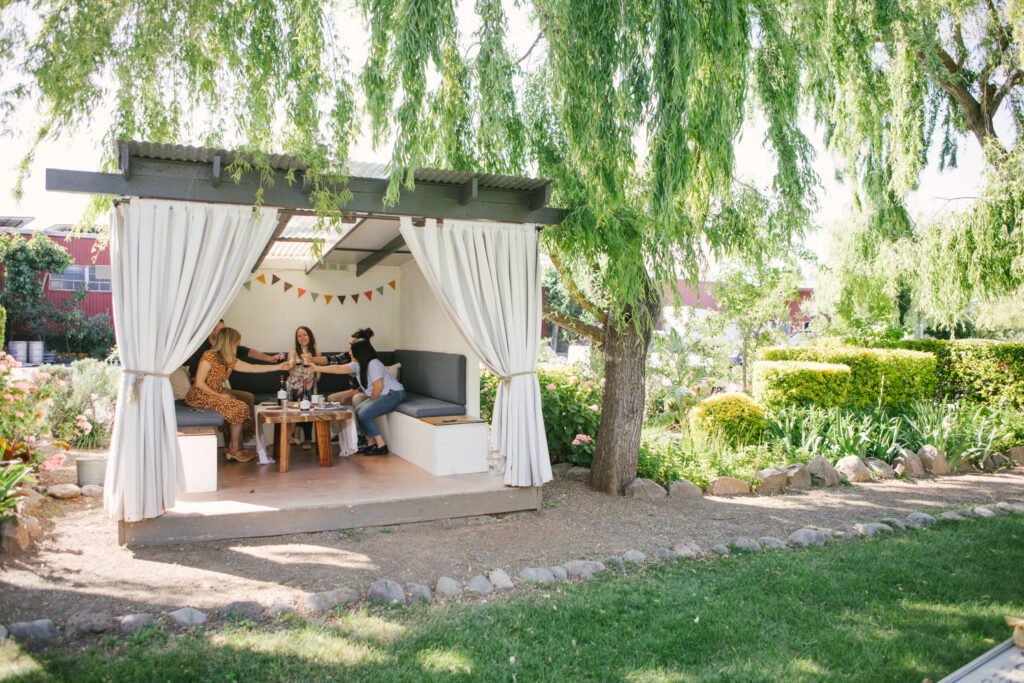
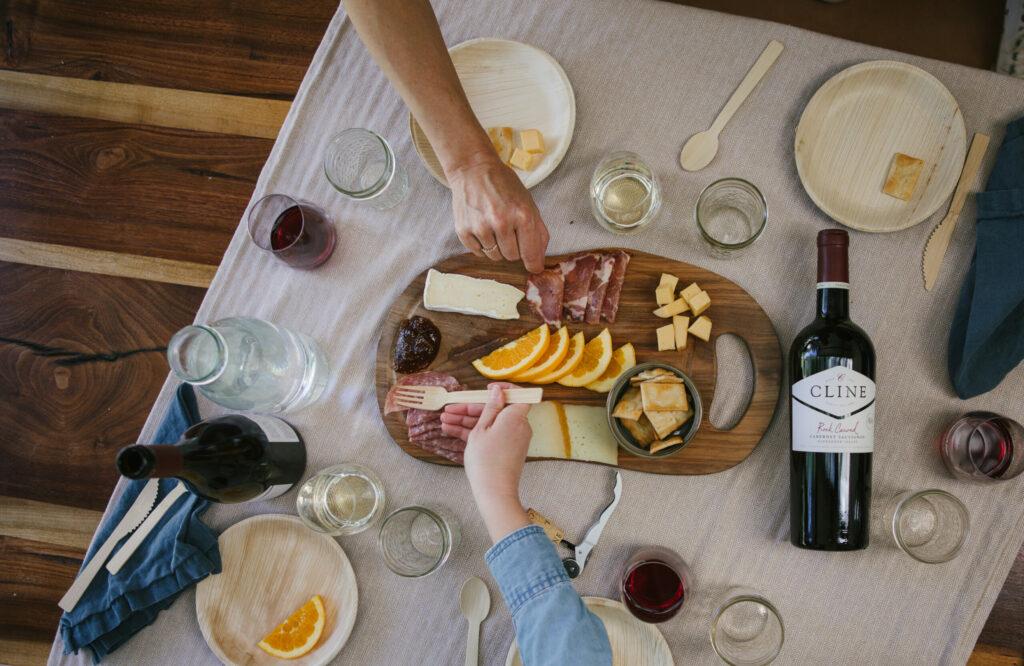
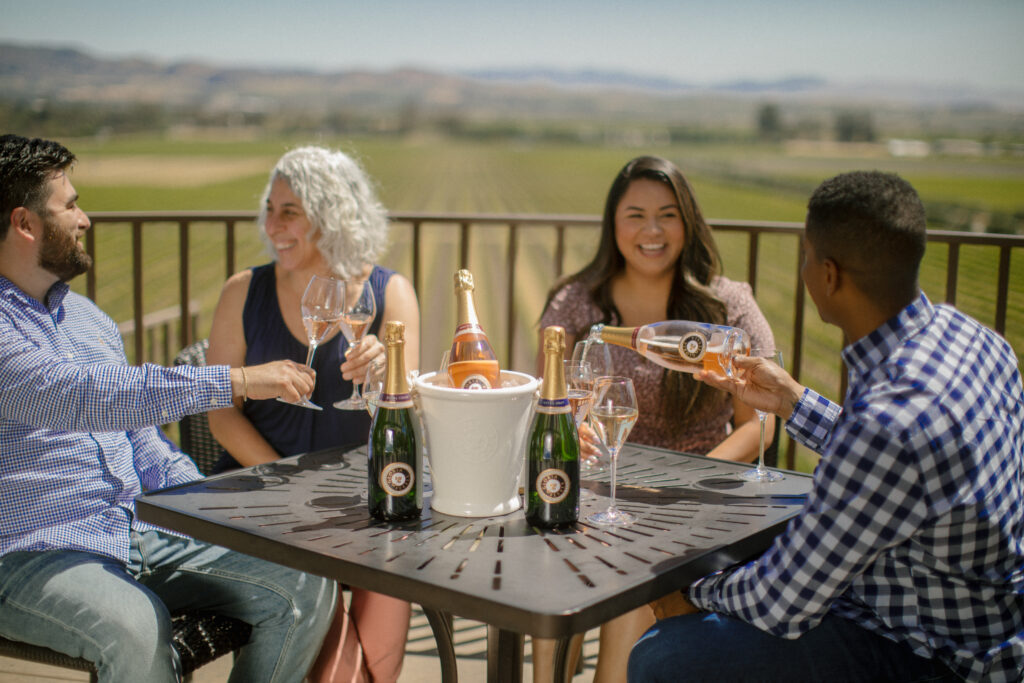
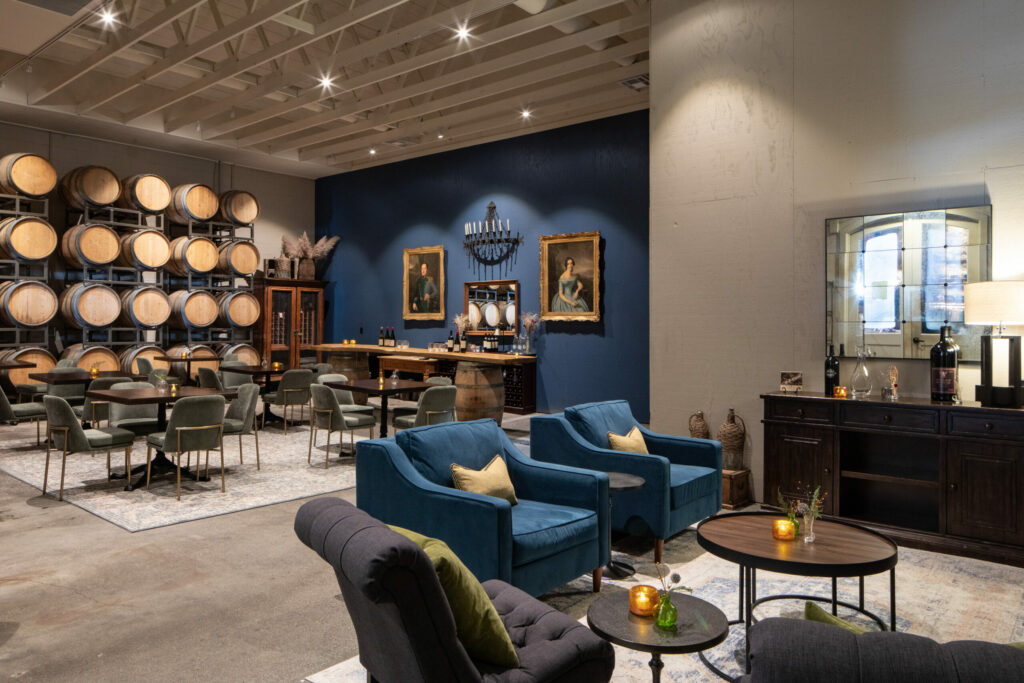
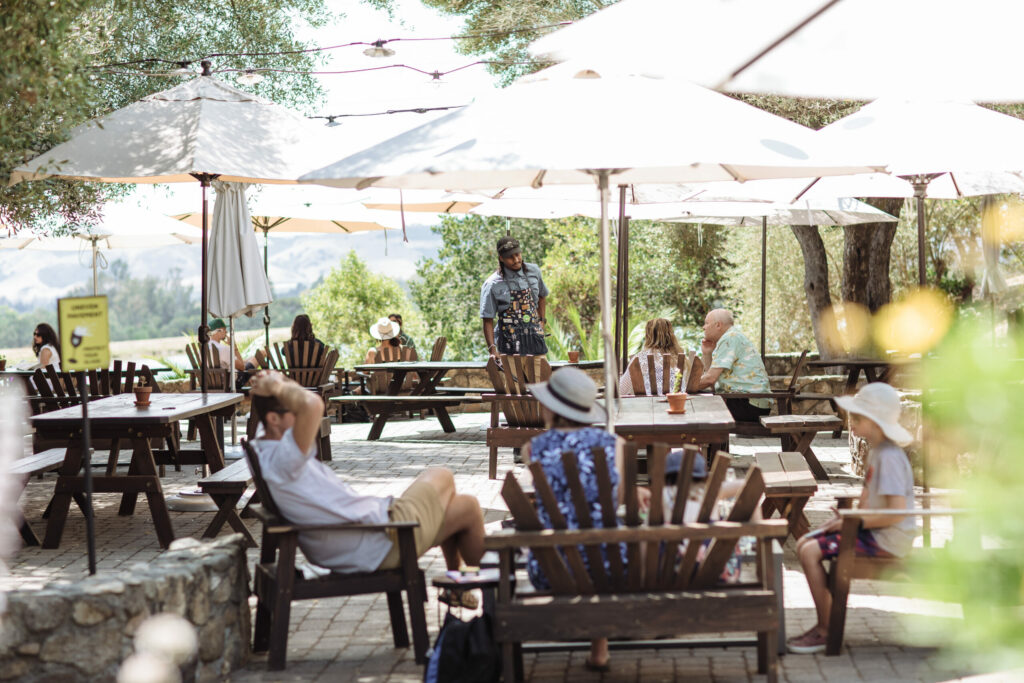
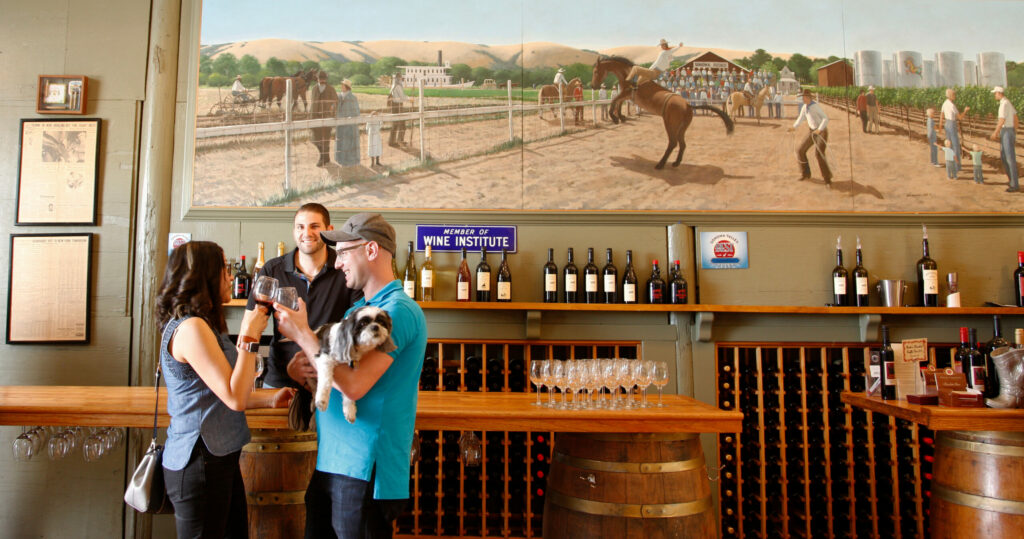

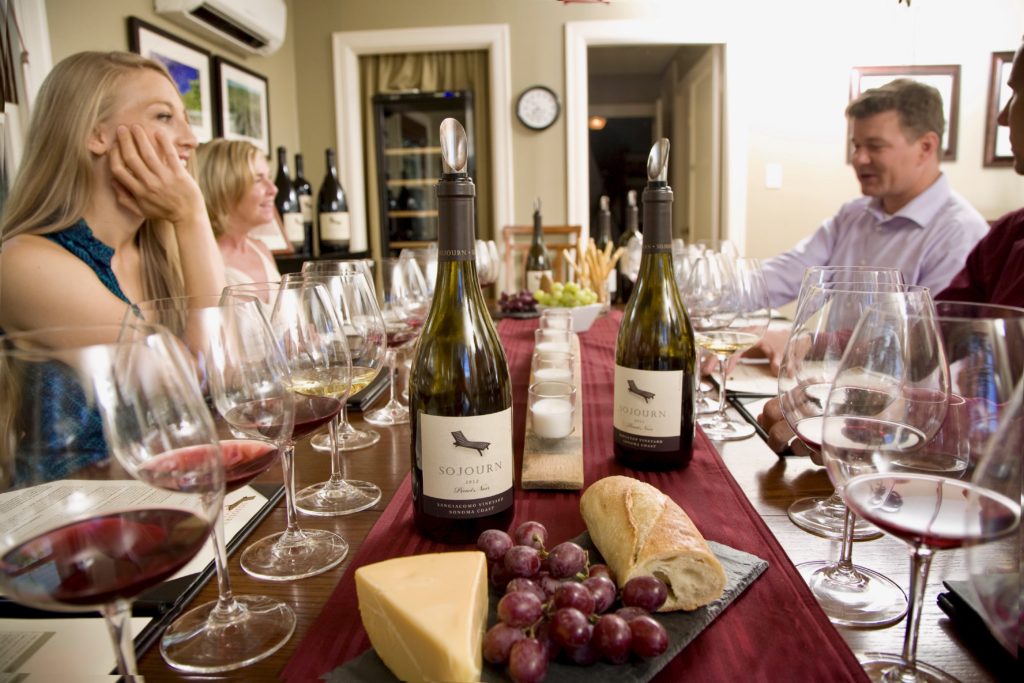
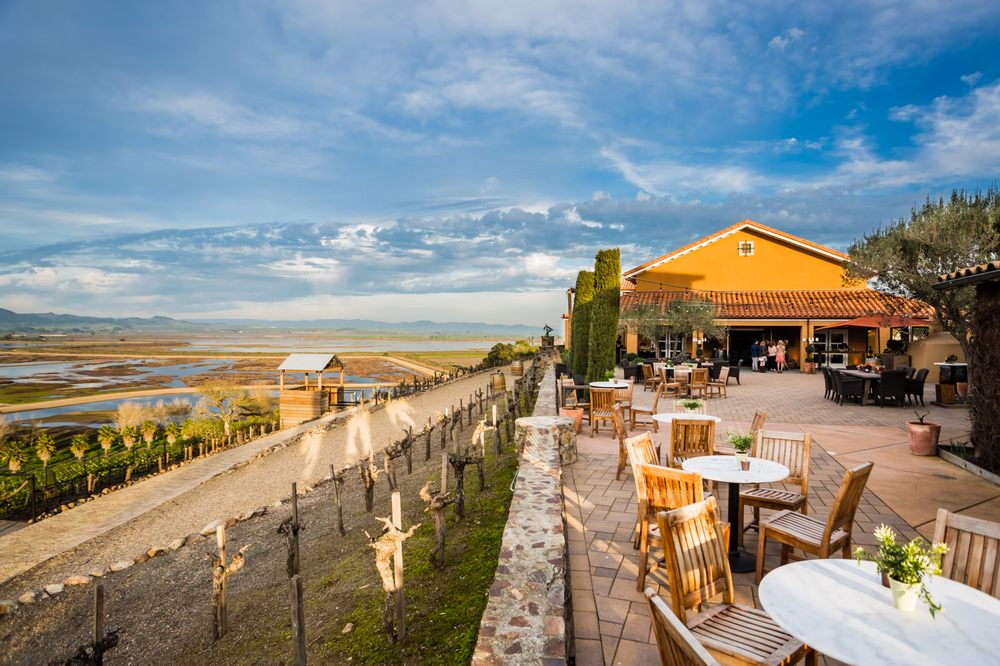
Wine lovers, rejoice! For one month only, Sonoma Valley wineries are offering premium tastings at an unbeatable price. Sonoma Sips, running from Feb. 15 to March 15, invites visitors to experience world-class wines for just $15 per tasting at 16 participating wineries.
The event, a collaboration between the Sonoma Valley Visitors Bureau and Sonoma Valley Vintners & Growers, is designed to make wine tasting more accessible. Whether you’re a seasoned enthusiast or a first-time visitor, Sonoma Sips offers the perfect opportunity to sample a variety of wines, from rich Pinot Noirs to refreshing Chardonnays.
“Wine Country can be intimidating to new visitors who don’t know what they want or where to start. Sonoma Sips embodies what makes Sonoma Valley so special,” said Tim Zahner, executive director of the Sonoma Valley Visitors Bureau, in a press release. “It’s a welcoming invitation to try something new in a beautiful place with friendly people.”
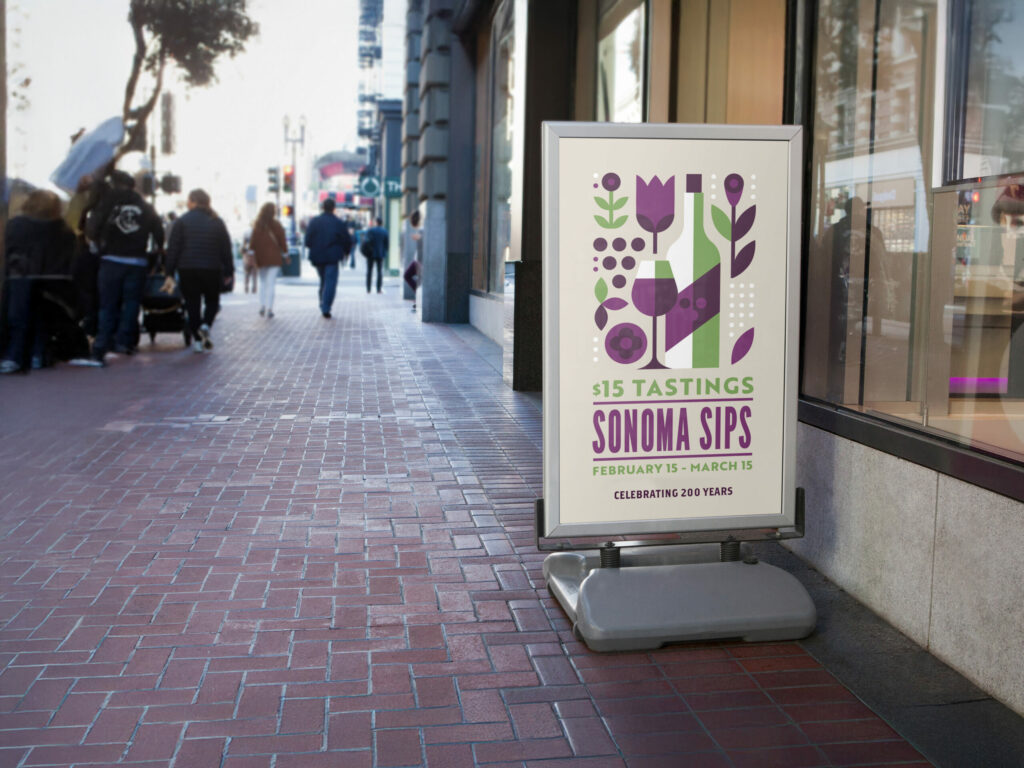
Taking part in Sonoma Sips is simple. Visitors can choose from a list of participating wineries, most of which don’t require reservations. Upon arrival, guests just need to mention they are there for Sonoma Sips to unlock the special tasting offer. Each winery will curate a selection of wines to showcase, allowing guests to explore a range of flavors and styles. Visitors can purchase bottles to take home or join a winery’s wine club for exclusive, year-round perks.
“Don’t miss this rare opportunity to experience the best of Sonoma Valley wines at an incredible value,” Zahner said in the release. “Gather your friends, plan a day trip, or make it a weekend escape to soak in the beauty and bounty of California’s Wine Country this winter.”
For more details and a list of participating wineries, visit sonomavalley.com. Looking for free wine tastings? Check out some Wine Country wineries offering complimentary tastings here.
The post Sonoma Valley Wineries Offer Special $15 Tastings During Sonoma Sips appeared first on Sonoma Magazine.
]]>
Artistic director Michael Fecskes will perform July 23 at Buena Vista Winery as part of the Valley of the Moon Music Festival.
The post Sonoma Cellist Provides Elevated Music Program To Local Students appeared first on Sonoma Magazine.
]]>










Four afternoons a week, cellist Michael Fecskes leads a room of young musicians through the fundamentals of classical music as the artistic director of Sonoma’s ViVO Youth Orchestras.
Modeled after El Sistema, the renowned Venezuelan training program that produced conducting phenom Gustavo Dudamel, the nonprofit based at El Verano Elementary brings music education and leadership training to K-12 students across Sonoma Valley.
Teaching is a calling for Fecskes, who moved to Sonoma as a high schooler, studied music at Sonoma State, and lived and performed in New York and Europe for over a decade before settling back in Wine Country eight years ago.
Fecskes performs locally as well, and will be playing with a chamber ensemble July 23 at Buena Vista Winery as part of the 10th anniversary Valley of the Moon Music Festival. valleyofthemoonmusicfestival.org, vivosonoma.org
Read below for Fecskes’s views on his music program and teaching process.
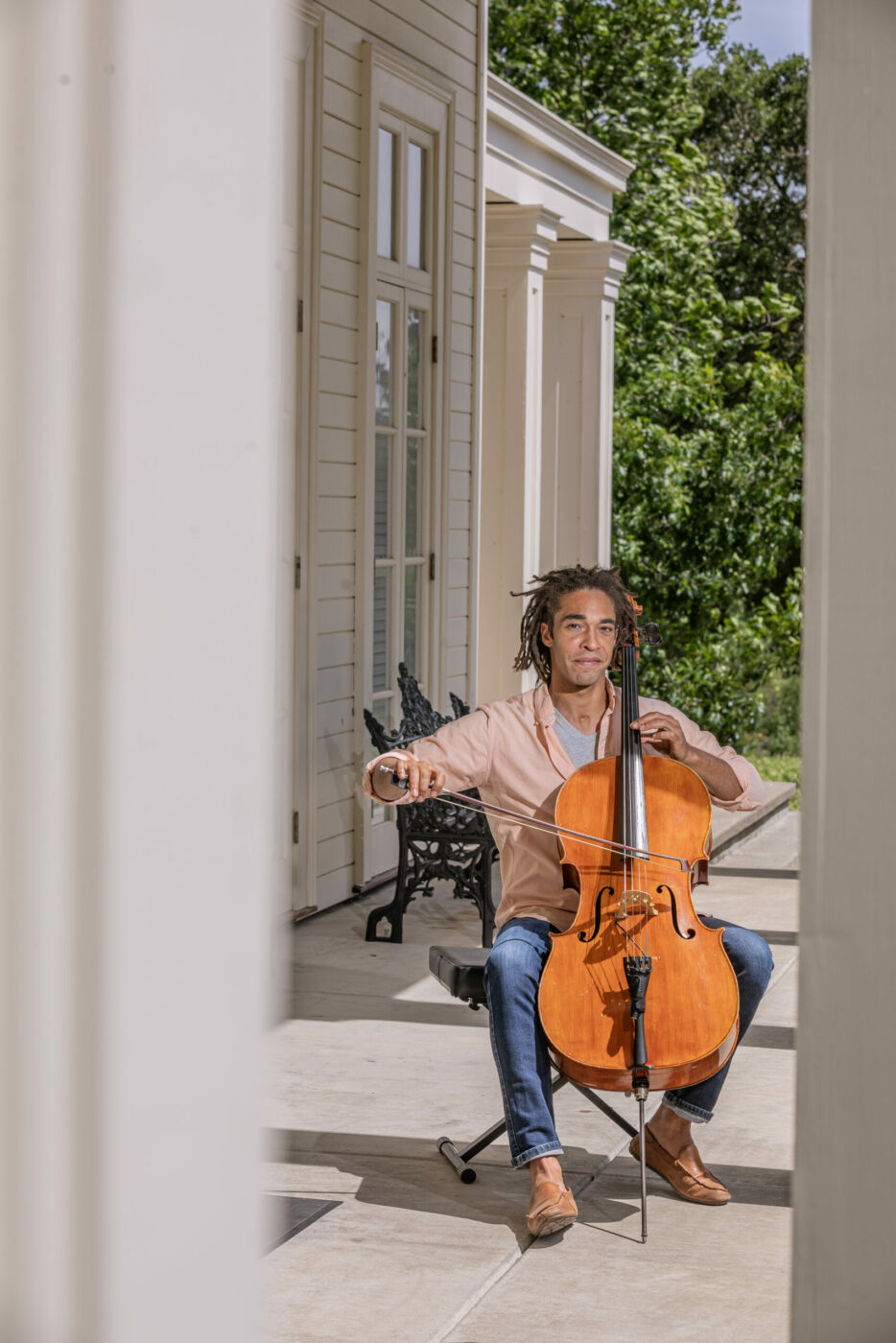
“I really wanted to design a program where the student could theoretically stay with us from kindergarten until they graduate from high school, always with something to do, always with an elevated purpose, with a new set of musical skills they can apply. And that’s working. It’s really beautiful to see.”
“I love to ask my intermediate classes, ‘When did you join?’ And they’ll tell me kindergarten or first grade, and I remember them when they were so little. Offering the program four days a week for years, you really know these children. You know about their days, their successes, which they always report back to us. You know their families, too. To be that kind of figure in their lives for multiple years, multiple seasons, multiple stages — I mean, there’s nothing better.”
“I’ve realized this type of work is not at all like a transaction. I don’t just come with a body of knowledge to instill and then just walk away. It feels very cyclical, very circular in the relationship with the children. Like, I give them everything I’ve gained in my life, and they give me back these amazing reminders of the human process.”
“The teaching helps me to recognize we all go through the same kinds of little struggles throughout our life, but with maybe a little less love and care as we get older. I run into my students all the time around town. I’ll hear my name from any direction from a child, and I’m just like, ‘Yes, what is it? What can I do?’ And I pull a Band-Aid out of my pocket.”
The post Sonoma Cellist Provides Elevated Music Program To Local Students appeared first on Sonoma Magazine.
]]>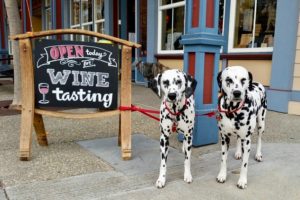
Get ready for Yappy Hour! These Sonoma County wineries welcome pooches and their wine-loving parents.
The post 30 Favorite Dog-Friendly Wineries in Sonoma County appeared first on Sonoma Magazine.
]]>










Sonoma County, with its many renowned vineyards, is a great place to enjoy a day of wine tasting. The region is also a great place for dogs and their owners, with an increasing number of parks, establishments and venues welcoming and catering to canine companions.
But just where should you go if you want to visit a winery while also spending time with your furry best friend? Fortunately, there are plenty of options in the county.
Scroll through our list below to see some of the best dog-friendly wineries in Sonoma County, and click through the above gallery for a peek at some favorites.
Sonoma
Gundlach Bundschu Winery
One of the oldest wineries in California welcomes on-leash dogs to their Rhinefarm. Pack a picnic and enjoy the patio, which overlooks the estate vineyards, or bring your dog into the historic tasting room, a pet-friendly pick for a rainy day. 2000 Denmark St., 707-938-5277, gunbun.com
Larson Family Winery
Larson Family Winery makes a dog-themed wine, Three Lab Cab, named after winery dogs Buster, Bubba and Pete. Dogs are welcome in the tasting room barn and on the lawn and picnic area, where you can play cornhole while your dog relaxes in the sun. 23355 Millerick Road, 707-938-3031, exploretock.com/larsonfamilywinery

Bartholomew Estate Vineyards and Winery
Located within 375-acre Bartholomew Park in Sonoma Valley, the winery has a variety of great views and trails for humans and canines to enjoy. Leashes are required at all times. 1000 Vineyard Lane, 707-509-0540, bartholomewestate.com
Roche Winery
Watch the world go by, dog by your side, on the patio of this downtown tasting room, with a fire pit and trees providing shade. The tasting room offers barrel tastings, snacks and some of the best people-watching in town. 122 West Spain St., 707-935-7115, rochewinery.com
Glen Ellen
Abbot’s Passage Winery + Mercantile
Coming from a long lineage of winemakers that stretches back over a century and a half, vintner Katie Bundschu is making her distinctive mark with small-lot Rhône-style wines. Her winery is both family-friendly and dog-friendly. Dogs should be on a leash. 777 Madrone Road, 707-939-3017, abbotspassage.com
B.R. Cohn Winery
This Glen Ellen winery offers water bowls and treats for visiting dogs to enjoy. Leashed dogs are welcome on the winery patio and grounds, which include estate vineyards and views of Sonoma and the Mayacamas mountains. 15000 Sonoma Highway, 707-938-4064, brcohn.com
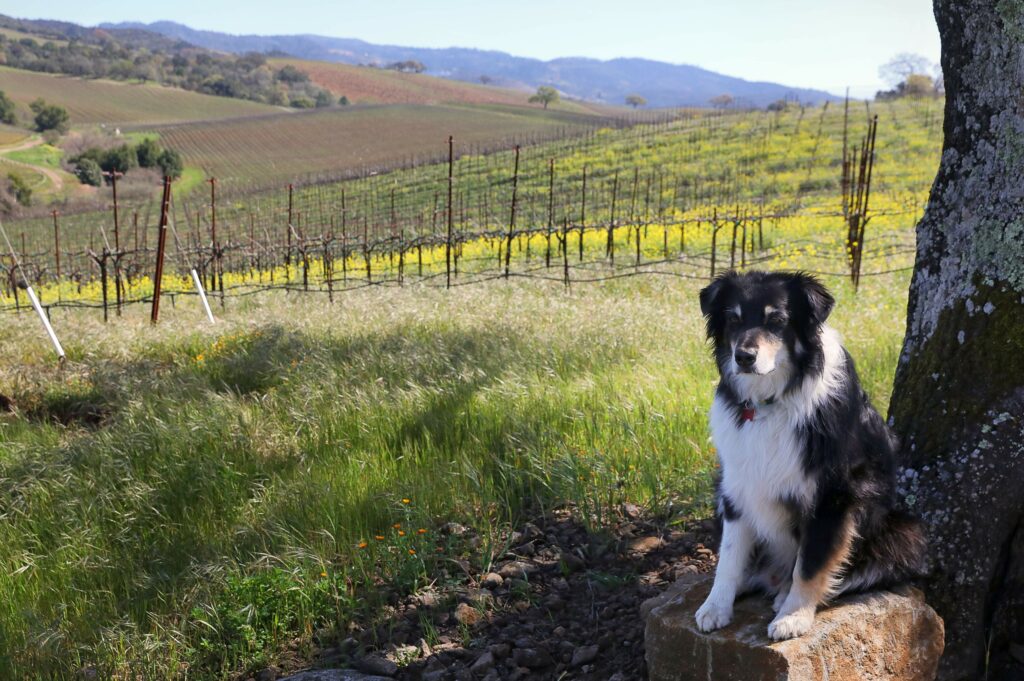
Kenwood
Deerfield Ranch Winery
“May All Fours Be With You” is the motto of Deerfield Ranch’s winery dog, Obi Wine Kenobi. Water is available for pooches, while dog owners can taste some of the wineries delectable vintages. 10200 Sonoma Highway, 707-833-5215, deerfieldranch.com
Kunde Family Winery
Fourth-generation winegrower Jeff Kunde invites dogs to accompany their owners on tastings and to join him on a hike through his family’s historic vineyards through oak woodlands, native grasslands and chaparral. 9825 Sonoma Highway, 707-833-5501, kunde.com
Landmark Vineyards
Welcome throughout the property, dogs are allowed to wander with their owners into the vineyard. Thirsty dogs get a taste of the royal treatment: Fiji water fresh from the bottle served in a bowl. 101 Adobe Canyon Road, 707-833-0053, landmarkwine.com
Muscardini Cellars
Winemaker Michael Muscardini’s golden retriever, Biondi, and staff welcome well-behaved dogs in the tasting room and on the patio and green rolling grounds behind the tasting room. Dogs can look forward to treats, water and toys as well as dog-themed events. 9380 Sonoma Highway, 707-933-9305, muscardinicellars.com
Healdsburg
Amista Vineyards
After taking a self-guided tour of the property with your dog, taste wine on the patio or in the tasting room featuring dog-themed art, while your pup enjoys dog biscuits. The winery hosts an annual fundraiser that benefits Canine Companions for Independence. 3320 Dry Creek Road, 707-431-9200, amistavineyards.com
Bacchus Landing
With a reputation of being “super” dog friendly, this collective of just over a half dozen boutique wineries is a hub of winemaking and tasting activity. Bacchus Landing is equally family-friendly with bocce courts and lawn games as well as a large open patio and five tasting rooms, among them Smith Story Wine Cellars and resident goldendoodle Lord Sandwich. 14210 Bacchus Landing Way, 707-395-0697, bacchuslanding.com
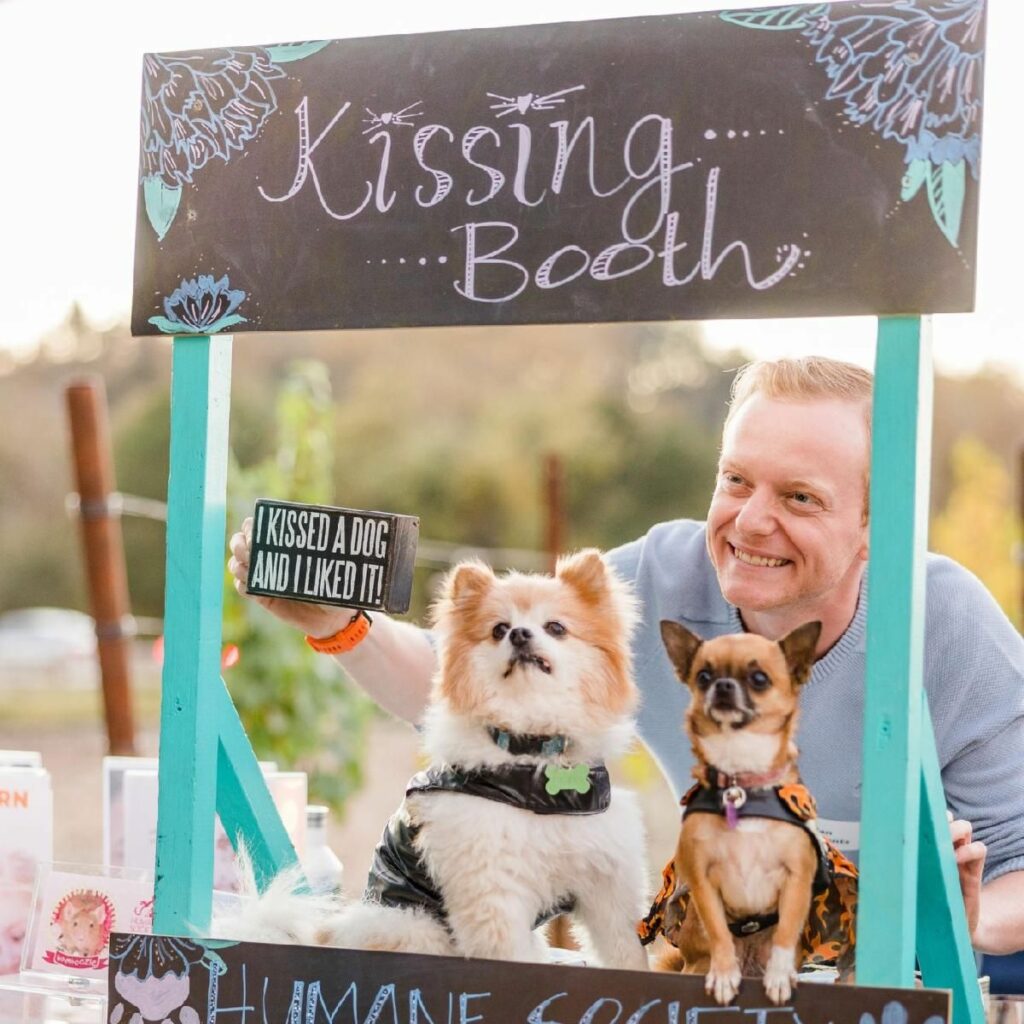
Breathless Wines
Guests can enjoy a flight of sparkling wines on the winery’s garden patio accompanied by their dogs. The winery also hosts fundraisers for Humane Society of Sonoma County. Out of courtesy for other visitors and staff, the winery requests that all animals are leashed and well-behaved. 499 Moore Lane, 707-395-7300, breathlesswines.com
Lambert Bridge Winery
This Healdsburg winery allows dogs to settle into a dog bed and relax with a bowl of water while owners try out the wines. After enjoying a tasting, wander through the estate gardens with your pup. 4085 W. Dry Creek Road, 707-431-9600, lambertbridge.com
Portalupi Wine
This winery’s downtown tasting room is a convenient stop along a dog walk. The family is a supporter of the local Humane Society and donates proceeds from their wine sales to the nonprofit. 107 North St., 707-395-0960, portalupiwine.com
West Wines
The winery, with a tasting room below a large oak with views of the vineyards, invites guests to enjoy a tasting on the dog-friendly patio. West Wines’ Instagram account features an assortment of photos of some of its canine visitors as well as its “winery cat extraordinaire” Jane Bond. 1000 Dry Creek Road, 707-433-2066, westwines.com
Wilson Winery
The Wilsons make a dog-themed wine, Three Dog Zin, which features the family’s three dogs, Molly, Sydney and Victoria. The staff welcomes dogs, offering pups treats and water, while humans sip zinfandel in the tasting room or on the patio overlooking the vineyards. 1960 Dry Creek Road, 707-433-4355, wilsonwinery.com
Cloverdale
BobDog Wines
Named after a beloved Rottweiler that lived at Sky Pine Vineyards 20 years ago, BobDog Wines lives up to its reputation as a dog-friendly winery, where pets are free to walk around on a leash. A portion of wine sales proceeds benefits programs for the protection and care of animals. 31955 Pine Mountain Road, 707-756-2471, bobdogwine.com
Geyserville
Sbragia Family Vineyards
Dogs are welcome in the tasting room, on the patio — even in the vineyards — at this Dry Creek Valley winery. With its views of the vineyard and surrounding hills, the patio terrace is a particularly nice spot to taste wine while your dog enjoys some treats and a water bowl. 9990 Dry Creek Road, 707-473-2992, sbragia.com
Dutcher Crossing Winery
Dogs are welcome in the tasting room, where they can try on winery-branded dog collars for purchase while their owners taste estate zinfandel and other small-production wines. The back patio and lawn is a great spot for nibbling on cheese and charcuterie, and playing catch. 8533 Dry Creek Road, 707-431-2700, dutchercrossingwinery.com

Sebastopol
Dutton-Goldfield Winery
Canine companions are celebrated at the winery, with special dog cookies offered to pets. Winery partner Theresa Dutton serves on the Northwest regional board of Canine Companions for Independence, a nonprofit that provides service and therapy dogs to those in need. 3100 Gravenstein Highway N., 707-823-3887, duttongoldfield.com
Horse & Plow
Located in a historic West County barn near local vineyards and apple orchards, Horse & Plow welcomes dogs and their owners to the tasting room. Treats and water are provided to pups. 1272 Gravenstein Highway N., 707-827-3486, horseandplow.com
Marimar Estate Vineyards and Winery
This vineyard, owned and operated by the Spanish-American Torres family, welcomes dogs in outdoor areas. Visitors will also find some larger than life dogs on the winery grounds—10-foot metal sculptures of the owners’ springer spaniels, Chico and Bonita. 11400 Graton Road, 707-823-4365, marimarestate.com
Taft Street Winery
Taft Street Winery is a family-friendly business — and that includes dogs. Well-behaved pups on a leash are welcome on the winery’s back patio. The winery also provides treats and water bowls. 2030 Barlow Lane, 707-823-2049, taftstreetwinery.com
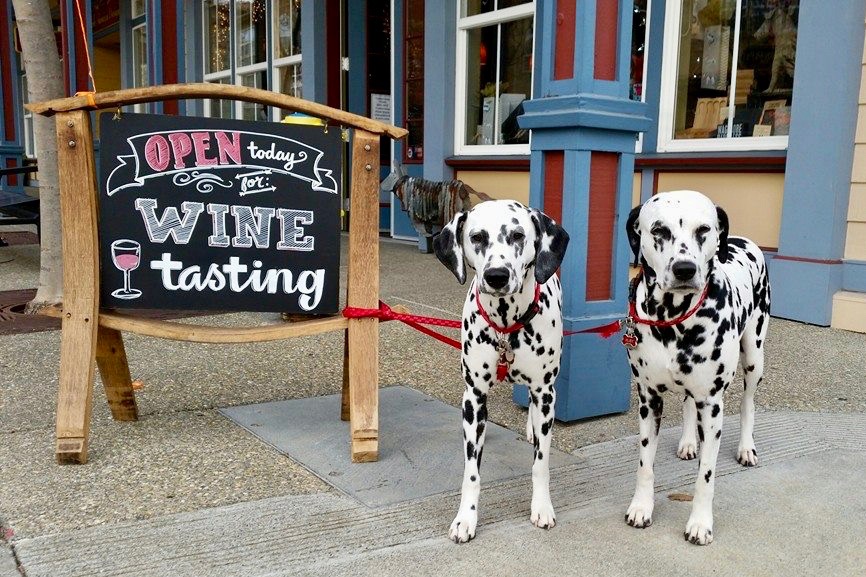
Windsor
Mutt Lynch Winery
Winemaker Brenda Lynch’s winery is both an ode to wine and to furry friends. The tasting room hosts “Yappy Hour” events and offers water, treats, toys and possible playmates, as staff members often bring their pups to work. The winery also raises funds for animal rescue organizations through its Wines That Give Back program. 9050 Windsor Road, 707-687-5089, muttlynchwinery.com
Bricoleur Vineyards
Bricoleur’s Essentials Picnic tasting ($75 per person) is the perfect excuse to treat yourself and your furry friend to an alfresco lunch by the estate pond with a glass of refreshing sparkling wine. Dogs are welcome in all outside areas at Bricoleur Vineyards, though only official service animals are allowed in the Winery Barn. All dogs should be leashed and never left unattended. 7394 Starr Road, 707-857-5700, bricoleurvineyards.com
Martinelli Winery
The historic Martinelli Winery & Vineyards welcomes well-behaved dogs on a leash for its Vineyard Terrace Tasting ($50 per person). The tasting includes a flight of estate wines to sip on the terrace overlooking the Hop Barn Hill Vineyard, with the option to add a picnic lunch and bottle service. Only service animals are allowed inside the tasting room. 3360 River Road, 707-525-0570, martinelliwinery.com
La Crema
Located within Saralee’s Vineyard in the Russian River Valley, La Crema Estate also welcomes dogs. The site’s landmark historic barn has been converted into a tasting and wine education facility. Dogs should be on a leash at all times. 3575 Slusser Road, 707-525-6200, lacrema.com
Santa Rosa
Balletto Vineyards
Is Balletto pet-friendly? Yes! The winery says it usually has dog treats and water bowls at the ready for visiting dogs. Just make sure your dog is on a leash during the entire visit. 5700 Occidental Road, 707-568-2455, ballettovineyards.com
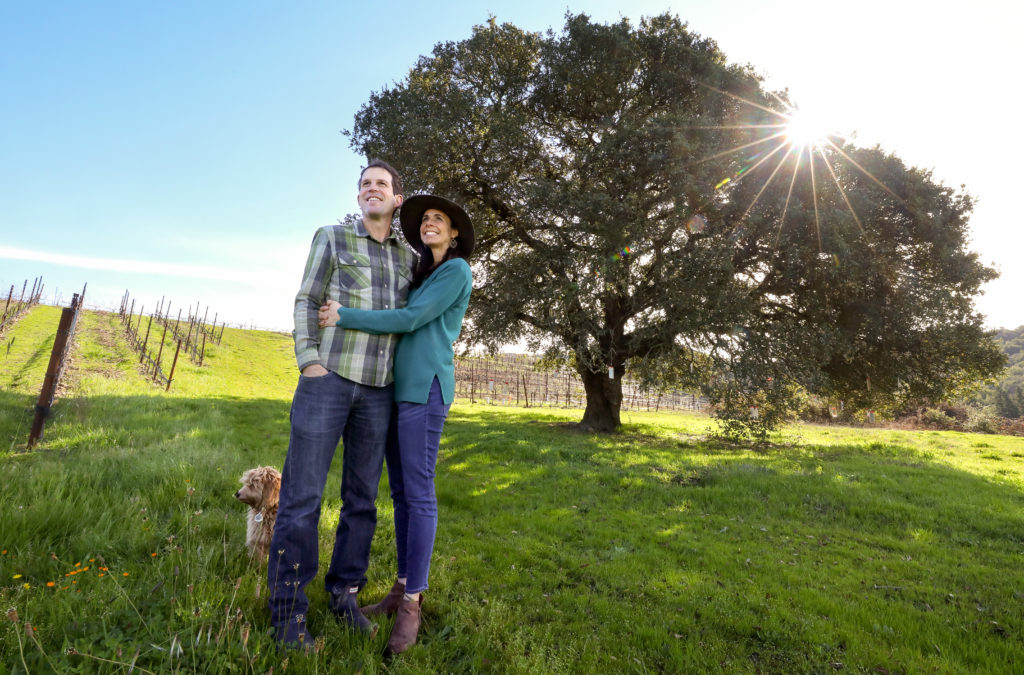
Belden Barns
This family-run winery prides itself on being dog-friendly and kid-friendly. The property, which is located on Sonoma Mountain, is also a working farm that produces a diverse array of fruits and vegetables. 5561 Sonoma Mountain Road, 415-577-8552, beldenbarns.com
Matanzas Creek Winery
Well-behaved dogs on a leash are welcome both inside and outside at Matanzas Creek, where aromatic lavender gardens line the property. For International Dog Day this year, the winery is hosting a pup-focused celebration for dog owners and lovers from 4-7 p.m. on Aug. 24. The event will include a selection of estate wines to taste, live music performances, “Burgers and Birria” by Bayou on the Bay, a complimentary painting session, and a plush dog toy and Matanzas Creek pop-up water bowl to take home for your furry companion. General admission is $60 per person and $50 for wine club members. Purchase tickets on Tock. 6097 Bennett Valley Road, 707-521-7019, matanzascreek.com
Freestone
Black Kite Cellars
This family-owned boutique winery will welcome dogs to the estate for its three-day-long Pooches & Pinot celebration, held between 10 a.m. to 5 p.m., July 12-14, at the Jasper House, Black Kite Cellars’ newly opened wine tasting room in Freestone. The event will include signature tasting flights of Pinot Noir and Chardonnay as well as healthy “bark-cuterie boards” with dog treats and a Black Kite Cellars bandana for visiting pups. Plenty of water will also be available for the dogs. Pooches & Pinot tickets are $67 per person. Purchase tickets on Tock. 12747 El Camino Bodega, 707-322-4863, blackkitecellars.com
The post 30 Favorite Dog-Friendly Wineries in Sonoma County appeared first on Sonoma Magazine.
]]>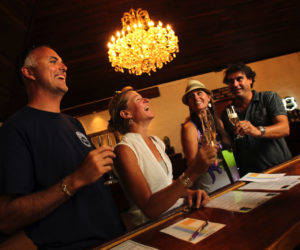
Trying to cut down on spending? That doesn't have to mean you can't go wine tasting.
The post 10 Free and Cheap Wine Tastings in Sonoma County appeared first on Sonoma Magazine.
]]>










A visit to Sonoma Wine Country doesn’t have to break the bank. You can fill your belly at inexpensive restaurants, spend the night at chic and affordable hotels and, perhaps most importantly, enjoy free or cheap wine tastings.
From quaint small town tasting rooms to sprawling wine gardens, Sonoma County offers wine sipping opportunities that will please your palate as well as your pocketbook. Click through the above gallery to discover wineries where you can taste wine for free or cheap ($20 and less).
Tina Caputo, Sarah Doyle and Linda Murphy contributed to this article.
The post 10 Free and Cheap Wine Tastings in Sonoma County appeared first on Sonoma Magazine.
]]>
The Sonoma County Wine Library doesn’t serve wine. But don’t let that stop you from a detour to this fascinating archive of wine history.
The post Sonoma County Wine Library a Haven for History Buffs appeared first on Sonoma Magazine.
]]>










Millie Howie blamed the moon for convincing her to move to Sonoma County.
It was the mid-1970s, and the publicist and wine writer was about to head home after an event at Geyser Peak Winery. As she made her way across the parking lot, her gaze lingered on the expansive view of Alexander Valley at dusk.
“I stopped and turned to get into my car, and the moon came up like a jack-in-the-box,” Howie recalled in an oral history recorded by the Sonoma County Wine Library in 2004. “It was the golden harvest moon … and it was perfectly round and enormous. I said, ‘Yup, this is where I’ve got to live.’”
Over the next 30 years, Howie became one of the most passionate promoters of the Sonoma County wine industry: the region’s first wine publicist, co-founder of the Wine Road, creator of the first Sonoma County wine map, curator of wine history and prolific wine writer.
But perhaps Howie’s greatest achievement was the Sonoma County Wine Library, which she envisioned and fundraised for over the span of 20 years.
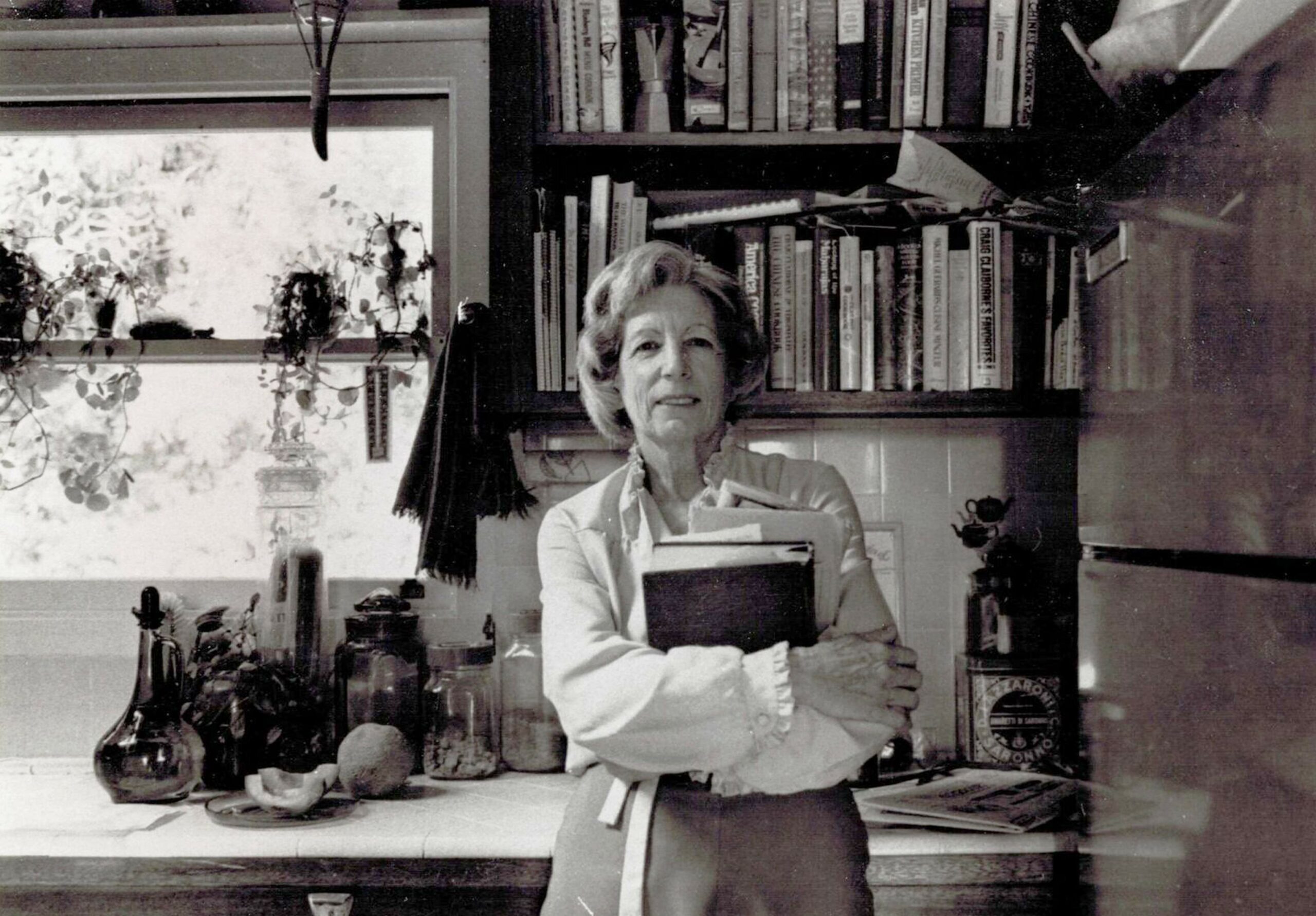
“Millie was the spark plug and the driver of the wine library,” said Jan Mettler, Howie’s former mentee and retired co-founder of Boss Dog Marketing. “She loved the rich history of Sonoma County’s farm families and wanted to preserve the region’s agricultural roots. She wanted to create something for the greater community.”
What is the Sonoma County Wine Library?
Dedicated in 1989, the Sonoma County Wine Library doesn’t serve wine. But don’t let that stop you from a detour to this fascinating archive of wine history.
Located at the Healdsburg branch of the Sonoma County Library, the wine library’s collection features 5,000 wine books, including 1,000 that are rare, and one astonishing tome dating to 1514.
You’ll also find a generous collection of historical wine ephemera, local wine artifacts and a glut of historic photos, maps and posters. The library carries current subscriptions to 40 wine periodicals and trade publications and plenty of current research material.

However, perhaps the library’s most valuable collection is Howie’s brainchild: a compendium of 26 oral histories with Sonoma wine industry pioneers like Davis Bynum, Merry Edwards, Saralee and Richard Kunde, Mike Tedeschi and Howie herself. (You can find physical copies of the transcribed interviews in the library and digital copies online at digital.sonomalibrary.org.)
“All it takes is one generation to lose historical information about your family or an industry,” said Jeff Davis, the Sonoma County Wine Library Association’s oral history chair. “These oral histories are important to preserving Sonoma County’s wine history and making the information available to the public.”
In 2018, Davis began producing “visual oral histories,” or video interviews, for added engagement and insight. So far he’s captured interviews with wine industry icons Helen Bacigalupi, Jim Pedroncelli, Joe and Tom Rochioli, Gary Heck and others.
Premiere screenings of the interviews serve as fundraisers for the wine library association and include a Q&A with the guest. The next event is scheduled for June 9 with Hank and Linda Wetzel of Alexander Valley Vineyards. (Tickets are available online at sonomawinelibraryassn.org/events.)
“The 30- to 45-minute visual oral histories appeal to a younger generation who wants information quickly,” said Julie Pedroncelli, board president of the Sonoma County Wine Library Association. “Video is a format they understand, and that’s one of the main reasons we’re doing this.”

A new generation
Compelling a young adult audience to visit and use a brick-and-mortar library is not a new challenge. So Peg Champion, the Sonoma County Wine Library Association’s media manager, is turning to local colleges and universities for help.
“We’re lucky there are so many wine studies programs in our area,” Champion said. “An internship program would be a great way for the library to connect with a younger audience who can carry on our work.”
But the legacy of the Sonoma County Wine Library doesn’t rest solely on the shoulders of younger generations.
“We have a vision for the future of the library and need the community’s support,” Champion said. “The library is a key component of wine history overall, not just in Sonoma County. We have an incredible resource in our community, and we want to expand our reach, educate students and continue to grow our treasure trove of information.”
Howie’s legacy
Howie, who died in 2011, remains an integral part of the Sonoma County wine history she fought to preserve.
This June, on the 100th anniversary of Howie’s birth, the Sonoma County Wine Library Association will celebrate her legacy by launching the Millie Howie Century Fund, a campaign to enlist new members and gain financial support for library services.
“Many people don’t even know there is a Sonoma County Wine Library, and our biggest challenge comes down to spreading that information,” Champion said. “There is history embedded in every rock and every brick in Sonoma County. We just want to share that with the greater community.”
You can reach Staff Writer Sarah Doyle at 707-521-5478 or sarah.doyle@pressdemocrat.com.
The post Sonoma County Wine Library a Haven for History Buffs appeared first on Sonoma Magazine.
]]>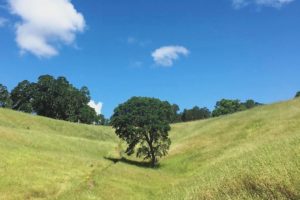
The Sonoma Valley corridor on Highway 12 in Kenwood and Glen Ellen includes several hiking destinations that each offer visitors something a little different.
The post 4 Glorious Sonoma Valley Hikes appeared first on Sonoma Magazine.
]]>










This article was originally published in 2018.
One of the many advantages to living in Sonoma County is having easy access to dozens of beautiful parks and thousands of miles of hiking trails. From taking in ocean views on coastal paths to hiking through Redwood forests and exploring botanical gardens, Sonoma County has something for every type of hiker. The Sonoma Valley corridor on Highway 12 in Kenwood and Glen Ellen includes several hiking destinations that each offer visitors something a little different. Click through the gallery above for four of our favorite hikes in Sonoma Valley.
The post 4 Glorious Sonoma Valley Hikes appeared first on Sonoma Magazine.
]]>
Grape juice and fun activities for the kids, vino for the parents - it's a win-win.
The post 10 Kid-Friendly Wineries in Sonoma and Napa appeared first on Sonoma Magazine.
]]>










There was a time when kids and wine country was not a great pairing. But that is changing. A new breed of family-friendly wineries are now welcoming wine-loving parents and their (well-behaved) offspring for some fun in the vineyard — children sipping grape juice while parents relax, wine in hand. Click through the gallery to discover the most kid-friendly wineries in Sonoma and Napa.
Grace Yarrow contributed to this article.
The post 10 Kid-Friendly Wineries in Sonoma and Napa appeared first on Sonoma Magazine.
]]>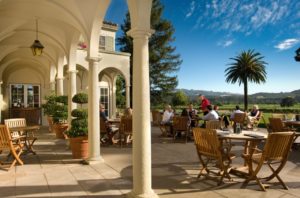
Venture outside the tasting room and sip away in the sun.
The post The Best Winery Patios in Sonoma and Napa appeared first on Sonoma Magazine.
]]>










Venture outside the winery cellars and tasting rooms and sip away in the sun. Click through the gallery for details.
The post The Best Winery Patios in Sonoma and Napa appeared first on Sonoma Magazine.
]]>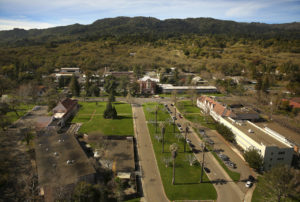
Closed by the state, the 127-year-old Sonoma Developmental Center awaits a new owner and plan for its future. At roughly 900 acres, the property encompasses some of the most beautiful and valuable land in the North Bay.
The post What’s in Store for the Last Big Spread of Undeveloped Land in Sonoma Valley? appeared first on Sonoma Magazine.
]]>










This article was published in the Jan/Feb 2019 issue of Sonoma Magazine.
Closed by the state, the 127-year-old Sonoma Developmental Center awaits a new owner and plan for its future. What’s in store for the last big spread of undeveloped land in Sonoma Valley?
The road winding up from the Sonoma Developmental Center toward Jack London State Historic Park is seldom used these days except by fire engines chugging up to a reservoir to fill their tanks for training exercises. Stately oaks stand along each side of the asphalt and wildlife is plentiful: deer trot from meadows into nearby coverts, and acorn woodpeckers yammer and flit from tree to tree. On any given day the road and an adjoining complex of trails are enjoyed by a few hikers, most of them Sonoma Valley residents. Though this is all state land, the fact that it’s open to the public isn’t widely known; it’s not a secret, exactly, but it’s a cherished destination little publicized by savvy outdoor enthusiasts.
Not far from the center, the road skirts a cemetery that has been all but abandoned. Most of the gravestones and markers are missing, and an old metal gate stands as an isolated sentinel to about 1,400 bodies resting under the long, yellow grasses of late autumn. They were residents of the 127-year-old campus, the oldest and largest state facility for California’s most developmentally disabled citizens. For the past three years it has operated under a state closure order, winding down an operation that once involved a workforce of 3,000 employees and about as many residents. The few dozen remaining residents were being moved to community facilities late last year and the buildings locked, with only the power and heat left on. The state called it a “warm shutdown.”
On the map the place is called Eldridge, a town encompassing the developmental center and named more than a century ago for retired sea captain Oliver Eldridge, who was charged at the time with finding a permanent home to care for the disabled. Its stately brick buildings, lush lawns, and tree-lined streets still mark it as a place apart, conceived and constructed in an altogether different era. Its large apron of open space — tightly clustered oak woodlands and shaded streams, stretching up toward the western skyline — has framed the northern end of Sonoma Valley since before Jack London rode horseback through the hills of his nearby Glen Ellen ranch. And today, speculation swirls over what’s to become of the site, which has been eyed for much-needed housing, space for university programs and offices, and other community services.
The closure, however, does not mark the end of the story for the Sonoma Developmental Center, the name given only 32 years ago to the sprawling campus that for much of the last century went by Sonoma State Hospital. At roughly 900 acres, the property in the heart of Sonoma Valley encompasses some of the most beautiful and valuable land in the North Bay. Most of it is undeveloped and constitutes a broad de facto wildlife corridor linking Sonoma Mountain on the west to the Mayacamas Mountains on the east. The 100 or so acres that comprise the developed campus contain 140 buildings, some of historic value, many others requiring an extensive retrofit before any reuse.
But it is a real estate gem that no one apparently wants to claim. Its value — in dollars, natural splendor, and historical significance — is indisputable. Its disposition, however, presents such an onerous maze of bureaucratic and financial obstacles that no viable plan has been devised for its future use.
The state wants Sonoma County to take the property but has been disinclined to pledge the millions of dollars needed to renovate existing facilities and implement a comprehensive management plan. The county, already stretched beyond its means by the 2017 North Bay fires, has backed away from taking responsibility. Conservationists, SDC patient and housing advocates, and others have reached consensus that the open space should be preserved, with “appropriate” development on the existing built-out footprint. But opinions differ widely on what “appropriate” means and no practical means for funding a large-scale remodel exists. The estimated cost of rehabilitating the salvageable fund to deal with infrastructure issues, buildings and electrical, water, and sewage systems amounts to $115 million, according to the state Department of General Services.
Meanwhile, the clock is clicking on the shutdown and eventual withdrawal of state funding. The state’s budget for the SDC was $88.6 million in fiscal year 2013-14, but dropped to $62 million by 2017-18. This year, state support will fall to about $1 million a month for maintenance until July, when the property will be transferred to the Department of General Services for disposition. An extension of the shutdown funding beyond that is possible but uncertain.
The tight deadline has interested parties fretting that the property — the last large tract of pristine open space in Sonoma Valley, one of Wine Country’s most scenic and popular destinations — could be lost or snared indefinitely in a politically driven process that overrides the public interest and discounts the value of the open space.
“The SDC is a diamond in the rough, but it’s still a diamond,” said Susan Gorin, the Sonoma County supervisor whose district includes the SDC and who has helped spearhead the coalition weighing in on the property’s future. “It has great potential for interim and low-income housing, watershed and wildlife protection, recreation and carbon sequestration, even for the development of major conference complexes for climate change, conservation, and water recovery.”
But, aside from being the last unsecured expanse of public property in the valley, the property is also part of the living history of the region. It was once the largest employer in the county and the largest community in the valley north of Sonoma, with everything from its own police force to a self-contained steam-driven power system. The people who lived and worked here were deeply woven into the civic structure and daily life of the region. Honoring that legacy, many agree, must also be a component of any future development plan.
“It’s a tough situation,” said John McCaull, the land acquisition program manager for the Sonoma Land Trust, which has taken a lead role in talks about the site’s future. “It’s clear the state wants to get out from under the property, but they can’t offer enough money for the county to take it on. The county’s position is that it isn’t set up to be a developer, at least for a property with these kinds of issues. The infrastructure is in terrible shape, including the ancient steam system that provides the heating and cooling. The county asked the state for a $150 million contingency but the state turned them down. So we’re at an impasse right now.”
Future use of the property does not call for the scale of care once provided to generations of developmentally disabled men, women, and children. But their long-standing claim to the place must be recognized, say advocates, and to date such acknowledgment has been wanting.
“SDC wasn’t perfect,” said Kathleen Miller, a co-president of the Parent Hospital Association, a group that has served as a strong voice of SDC’s residents and family members. Her adult son recently left the center for a community facility, and Miller said she’s satisfied that he’ll continue to receive good care, though she’s concerned that won’t necessarily be the case for all former residents, especially those with behavioral and severe medical issues.
At SDC, “there were problems, including with the staff at times. But everything considered, it met needs pretty well. It certainly did for my child,” Miller said. “We intend to follow these residents as they move into new homes to make sure they get the best care possible. We’re not going to fade away just because SDC is closing.”
Sonoma Valley resident Walter McGuire, who is president of the San Francisco-based Environmental Policy Center and former director of the California State Office in Washington, D.C., said some groups have made productive proposals for the property. The Friends of Jack London State Historic Park, for example, have offered to acquire and manage the western portion of the undeveloped area that abuts the park, and many community activists are pushing for low-income and interim housing in the developed zone. But such suggestions are tentative and don’t address the disposition of SDC as a whole, McGuire said.
“The state wants to do a complete deal all at once,” he said, noting that officials have turned aside offers to deal with the open space first and the developed acreage later. “They don’t want to approach it in a piecemeal fashion.”
Sonoma State University has been suggested as a lead management partner for the site, but that’s unlikely to happen anytime soon, said Paul Gullixson, the vice president for strategic communications at SSU. It can make sense for a state university to assume authority over a development center, he said, citing Cal Poly Pomona’s annexing of the Lanterman Developmental Center as an example.
“But Lanterman was very close to Cal Poly, and the SDC is about 20 miles from SSU over winding roads,” Gullixson said. “It’s true, SSU is actively seeking out housing for our junior faculty and staff. We just bought a 90-unit apartment complex in Petaluma. But the distance to SSU is significant, and the costs of rehabilitation — including dealing with asbestos, lead, and possibly other toxins in some of the buildings — would be prohibitive, considering the state isn’t at all likely to provide funding. We agree that the open space must be preserved, and there could be good options for redevelopment on the campus. If a role for us becomes clear in the future, we’d like to pursue it, but we just don’t see that nexus right now.”
Meanwhile, the state will proceed with its “warm shutdown,” paying about $1 million a month for a skeleton staff that includes police and fire coverage to ensure vandalism and trespassing are kept at bay and basic services are maintained.
The Presidio Trust, the organization formed to oversee the transition of the former Army base in San Francisco into a national park encompassing private homes and businesses, has been floated as a possible model for the SDC. At the time of its decommissioning, the San Francisco Presidio was one of the most iconic properties in one of the most expensive and glamorous cities in the world. It had hundreds of buildings in good condition that drew the attention of thousands of prospective tenants. Even antiquated structures were in high demand: George Lucas tore down the old hospital to build his renowned Letterman Digital Arts Center.
That model holds some potential, say McCaull and McGuire. But while the SDC boasts undeniable cachet of its own, it hasn’t nearly the number of habitable buildings that were on Presidio land at the point of its transition, and the attendant infrastructure is in far worse shape.
Before anything is attempted, a thorough and objective analysis must be done on the developed footprint, say some observers.
“I’ve worked a little in development, and I know a bit about older structures like these,” said Sonoma-based developer and lobbyist Darius Anderson, whose real estate firm, Kenwood Investments, is a leader in the massive redevelopment project envisioned for San Francisco’s Treasure Island.
“I probably tend to look at this differently than somebody who starts out determined to do something specific, like build low-income housing,” he said. “I think the first thing needed is a detailed assessment of the historic value and preservation costs of every building out there so we can determine what has to stay and what can go. Then we can definitively say — for example — how much affordable housing the existing or renovated infrastructure will support.”
Anderson, managing member of Sonoma Media Investments — owner of Sonoma Magazine and The Press Democrat — stressed that he had no current involvement and “absolutely no desire, zero interest,” in working on any SDC project.
“But I live in the valley, I’m deeply interested in the region’s history in general and Jack London particularly, and I want what’s best for the community,” he said. “Whatever happens, we have to be sure of a few things — that we preserve the historic integrity and the open space, and that we don’t create a lot of new traffic.”
Looking into a cloudy future
A good general analysis of possible scenarios for the developmental center is already available. In 2015, Governor Jerry Brown’s administration ordered a decommissioning of the facility amid a string of funding setbacks and scandals at the state’s five developmental centers that involved patient deaths and abuse. Two years later, the state Department of General Services contracted with Wallace Roberts & Todd, an urban planning and design firm, to assess the property.
“We didn’t recommend specific uses,” said Jim Stickley, a principal at WRT. “Instead we focused on ‘possibilities and constraints.’ Among the things that stood out were the remarkable natural resources and the opportunity to encompass those into a regional ecological framework. The property links Sonoma Mountain with the Mayacamas range — it’s an extremely important wildlife corridor, perhaps the most critical linkage for the whole area.”
But the undeveloped portion of the SDC doesn’t necessarily require a completely hands-off approach to retain key ecological values, said Stickley. In certain portions of the property, seasonal grazing or other low-impact agricultural practices could be allowed without negative impacts to wildlife.
The report also identified opportunities on the developed campus to preserve buildings of historic and cultural significance and retrofit others for housing or other uses. Significant constraints exist as well, Stickley said, including the mediocre-to-poor condition of utility networks and the decrepit condition of some buildings.
“Some of the buildings that you may want to preserve the most — such as the brick Professional Education Center in the middle of the campus — are in the worst condition, with the floors literally falling through,” Stickley said. “So in these cases, the challenge is how do you attract the funding and use it to bear the burden of restoration?”
The SDC falls within the jurisdiction of two California state senators: Mike McGuire and Bill Dodd. McGuire’s district encompasses the developed campus, while Dodd’s covers most of the open space. McGuire said legislators and state agencies instituted a three-part process following Gov. Brown’s closure order.
First, state regulators and private stakeholders collaborated to ensure that all SDC’s residents had secure homes and adequate care, the Healdsburg Democrat and former Sonoma County supervisor said. The process is now moving on to its second phase: actual disposition of the land. But this isn’t a standard divestment of state surplus land, which typically involves the expeditious transfer of property to county or city agencies for pressing local needs, such as housing or recreation. Parts of SDC could qualify for either or both uses, McGuire said.
“SDC is a special site both in terms of its beauty and history, and it demands special treatment,” McGuire said. “So we’re having in-depth discussions with the County of Sonoma to determine how to take the SDC into the next century and beyond… My position is that this must be done right, not fast. The community will have a seat at the table the entire way.”
The third phase, McGuire said, will be adoption and implementation of a plan that emerges from that collaborative process.
“One bottom line is that the open space must be protected in perpetuity,” he said. “I think there’s already broad agreement on that.”
Sen. Dodd of Napa concurs generally but is more pointed about the need for the county and local advocacy groups to put some skin in the game.
“Unless the community steps up, it’s hard to think of a scenario that doesn’t involve a developer,” Dodd said. “The costs [of rehabilitating infrastructure and buildings] will be significant. I understand the county doesn’t have unlimited resources, but neither does the state. We do need to let the process play out in determining what gets built. But maybe we should engage with a local developer to work with the community to define the art of the possible.”
Supervisor Gorin has been working for six years with a broad group of community advocates, the SDC Coalition, to forge a long-range development and management plan for the property. Originally, the group hoped to keep the center open, given the critical services it provided to a vulnerable population and its value to the region as a large employer offering well-paying jobs. When it became clear that the center would be closed, Gorin said, she and her allies cooperated on the assessment produced by Stickley’s firm.
Shortly after that report was issued last year “the state told us that the county had to pull something together in a few months to take over the center,” Gorin said. “We were surprised… It’s widely known that the county’s budget and general fund have been depleted by the North Bay fires, that we’re short on staff — that we just don’t have the finances or people needed to take on something like this.”
The state’s declining investment in SDC infrastructure, Gorin said, means the county is ill-equipped to bear the expense of retrofitting.
“It’s time that the community and the Board of Supervisors state publically that the State of California has the responsibility for this site, that they just can’t abandon it or sell it to the highest bidder,” Gorin said. “[The state] has promised strong community support, and they need to follow through. I understand they want to move forward as quickly as possible with as little public investment as possible, but they have a responsibility to shepherd this process with adequate resources.”
The state has been clear about its commitment to a publicly driven process to decide the property’s future, said Monica Hassan, deputy director of the California Department of General Services. “We understand that there is a great deal of community interest — and concern — over the future of the campus: When its future will be decided, how the community will get to weigh in, and what the state of the campus will be in the interim. We understand these concerns and continue to evaluate next steps. Unfortunately, the issue is complicated, and since it is subject to the state’s annual budget process, it will take time.”
So where from here? That, of course, is the crux of the problem. The SDC was integral to the community, its disabled residents, and their families in multiple and interconnecting ways. That value must be preserved in the property’s future, said Miller, the Parent Hospital Association co-president.
Further, PHA members have some specific things they’d like to see implemented, and restoration of the cemetery — an act both material and symbolic — is foremost among them.
“It’s completely abandoned,” Miller said. “There were once concrete markers on the graves, and they’re all gone now. Supposedly, a lot of them were used to shore up some land along a creek. It’s just disrespectful, callous even, what happened there. These were human beings. We want the debris cleared and the markers replaced. We want to turn it back into a quiet, peaceful, and well-maintained place where family members can go and be with and think about their loved ones.”
Virtually all parties involved in the SDC agree that something must be done to forge a new era for the campus. Most are convinced that it will be done. The alternative is hard to fathom. Failure to preserve the open space and develop the campus in a way that serves the community and speaks to a progressive and all-inclusive vision is somehow unthinkable.
“There are no bad guys involved in this,” said Walter McGuire. “Everyone has good intentions. But somebody has to step up and cut the Gordian knot.”
The post What’s in Store for the Last Big Spread of Undeveloped Land in Sonoma Valley? appeared first on Sonoma Magazine.
]]>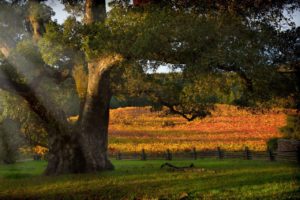
Explore new interactive exhibits and enjoy the beauty of Jack London State Park during Grand Reopening Weekend.
The post Welcome Back: Refreshed House of Happy Walls Returns to Jack London State Historic Park appeared first on Sonoma Magazine.
]]>










After three years of renovations, and thanks to nearly $1 million raised by private donors, the House of Happy Walls museum reopens in November at Jack London State Historic Park. With 22 modernized and interactive exhibits, the museum will bring to life the many inspiring adventures of famed author Jack London and his wife Charmian, who were both trailblazers, humanitarians, innovators and so much more.
An extensive renovation was long overdue, as most of the museum’s exhibits hadn’t been updated since the 1960s.
“They lacked that state-of-the art quality, the new technology that appeals to younger audiences and essentially, it had a 1960s, old-fashioned look and feel,” said Tjiska Van Wyk, Executive Director of Jack London State Historic Park. “The exhibits were not organized to tell the story of the Londons in a way that inspired people or helped them understand that there was a lot more to Jack London than his books.”
The first floor of House of Happy Walls 2.0 is dedicated to the life and times of Jack London — one exhibit, for instance, focuses on his documentary photography of the Korean War, poverty in East London, the 1906 earthquake and more — while the second floor is all about Charmian.
“We believe her story is as remarkable as his,” said Van Wyk. “At the turn of the century, she was really breaking the mold. She did not buy into societal expectations of women at that time. She was the epitome of the progressive women.”
As an example, the “Charmian the Trailblazer” exhibit delves into her progressive push for women to ride their horse astride, rather than sidesaddle. Deemed appropriate for ladies, Charmian believed riding sidesaddle was also incredibly uncomfortable and unproductive. At the center of the exhibit is a moving saddle, which visitors can ride astride and imagine they’re Charmian.
Jack London’s words about his Sonoma County Beauty Ranch come alive in this centennial tribute to the American writer. (Video by Joshua Dylan Mellars)
The Grand Reopening Weekend, scheduled for November 10-11, is jam-packed with free, family-friendly activities such as storytelling, kite flying, face painting, horse-drawn carriage rides, a community picnic, fencing demonstration and arts-and-crafts.
Admission to House of Happy Walls will always be complimentary with the $10 park entrance fee, but for an extra cost on opening weekend, guests can sign up for a horseback ride through the heart of wine country, a tour of Beauty Ranch with a tasting of wines made from grapes exclusively grown within the park, and a special tour of the Wolf House, London’s dream mansion that burned down in 1913, before the couple was able to move in.
“We want visitors to come to this museum, learn about their story and be inspired by it to live their life to the fullest. Jack London was a true rags to riches story. He was born in near poverty, had little education, yet he broke away from that and became the highest paid author of his time. He was the first person to start an animal rights campaign; he was probably the first organic farmer in California,” said Van Wyk.
“We want people to see all of that and go, ‘I can do that. I’m going to pursue my dream. I’m going to make something happen that I didn’t think I could do.'”
The post Welcome Back: Refreshed House of Happy Walls Returns to Jack London State Historic Park appeared first on Sonoma Magazine.
]]>